What are Cylinder Beads?
What are cylinder beads? Have you ever heard them mentioned before? Well, the funny thing is, you probably already use these beads, but you may not know it! “How can that be?”, I hear you ask! Well, let’s take a look.
What are cylinder beads?
They are a very specific type of seed bead, incredibly regular in shape and size. Now, that may already have given you a clue…
Let’s think about the manufacturing process here for a moment… Blow a very long tube of glass, then cut it at regular intervals to turn it into beads. I’m giving you that image because I think it will help you to understand a little more easily.
Let’s take a look at a photo comparing them to some other seed beads…
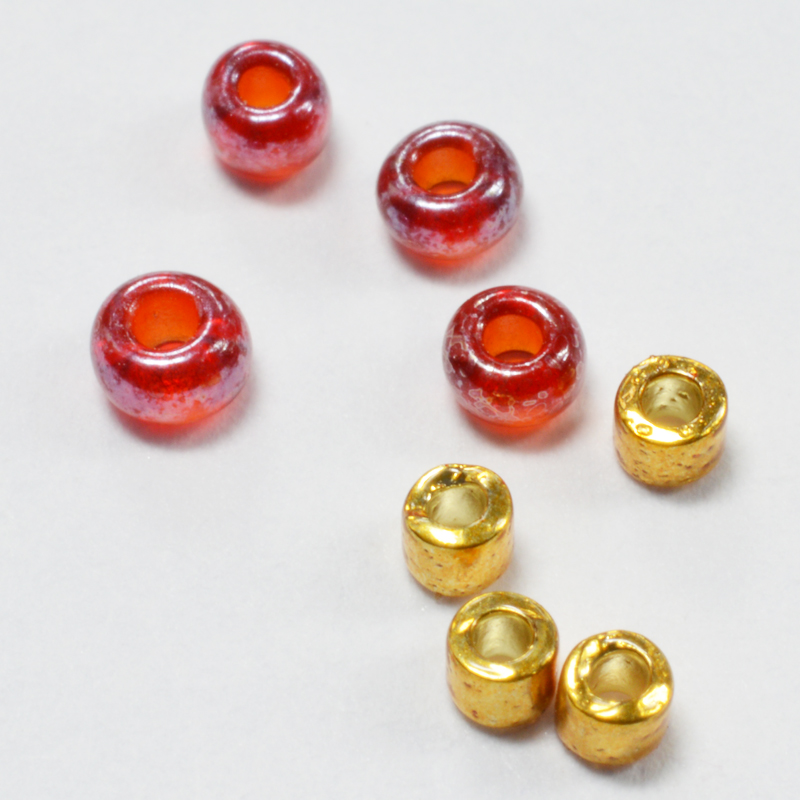
The cylinder beads are the gold beads. The red beads are round seed beads (sometimes called by their French name: rocailles). Apart from the slight difference in size, can you spot anything else about these two sets of beads?
Well, if you look closely, you’ll see that the ‘normal’ seed beads (rocailles) have slightly rounded edges and sides. Whereas the cylinder beads have perfectly straight sides and are pretty flat across the top and bottom. Think back to that image of the long tube being sliced into tiny pieces.
Before I get on to the issue of why that’s important, let me ask you that question once more:
What are cylinder beads?
Based on my description, you might have guessed. You probably know these beads by their brand name: Delicas. So, why am I being so pernickety about calling them cylinder beads?
Well, did you know that there is more than one brand? So technically, a ‘Delica’ is a BRAND of bead, not a TYPE of bead.
What are the cylinder bead brands?
The Delica brand is manufactured by the Miyuki bead company in Japan. This same bead company also manufactures ’round’ seed beads – the rocailles that we were looking at above – and other shapes.
And, if you know anything about beading, you may know that the Japanese beads are famed for their quality. I’m not only talking about the quality of glass, but the quality in terms of regularity of size and shape.
Cylinder beads take this regularity to a new level.
But Miyuki isn’t the only Japanese manufacturer, and it isn’t the only company that makes Cylinder beads.
The other main Japanese bead manufacturers are Matsuno and TOHO. To the best of my knowledge, Matsuno doesn’t have a cylinder bead.
TOHO, however, actually has two brands of cylinder beads: the AIKO and the Treasure beads.
How do Delicas, Treasures and AIKOs differ?
That’s an excellent question. Since Delicas have really cornered the market, when it comes to cylinder beads, what’s different about them?
Well, firstly, in the UK at least, Delicas are the most widely available of the cylinder brands. So, most bead shops stock them. They were developed in the 1980s. I had a theory that perhaps the Delicas were first to market, but since I can’t find a date for the launch of the TOHO cylinder brands, I’m struggling to verify that. (If anyone knows this, please leave a comment at the end).
Comparing prices, the Treasures are actually the least expensive of the cylinder bead brands. Delicas sit in the middle, and AIKOS are most pricey. Why? Well, the AIKOs are so precision cut that they have earned the name: ‘the perfect bead’.
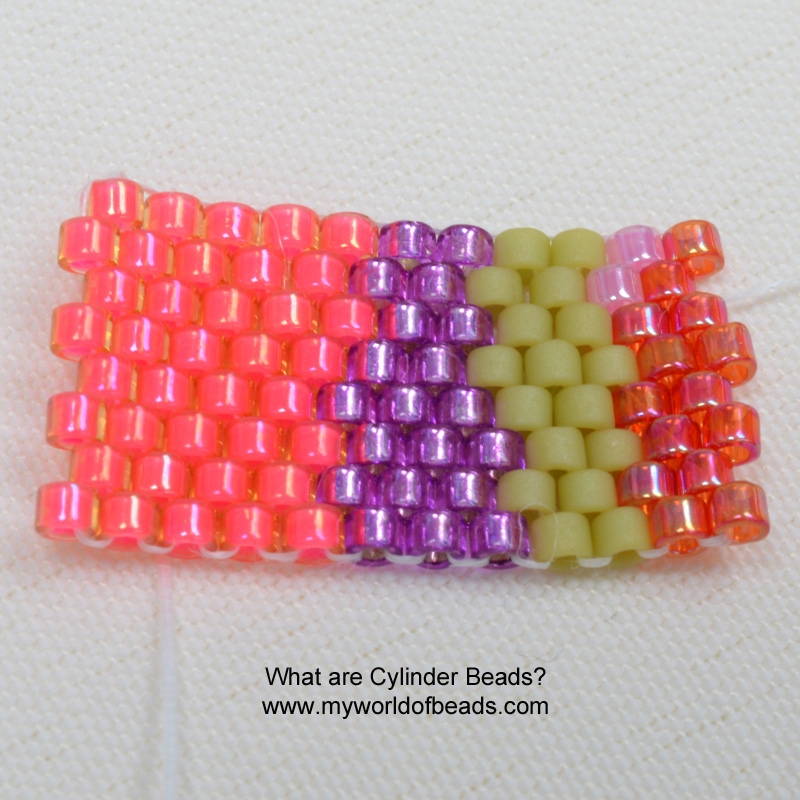
I’ve had the pleasure of working with both Delicas and also the AIKOs. I stitched the sample above using AIKO on the left (the really, really bright pink!), and then various shades of Delicas. These are all size 11/0 beads.
Hopefully you can also see, from the strip, the precision we’re talking about.
So, are the AIKOs really more perfect? I haven’t used them as much, but I will say that I don’t think I’ve ever had to throw away an AIKO bead. Now, don’t get me wrong… the Delicas are fantastic, but occasionally, you will find a bead that is slightly wider, or slightly narrower than ‘standard’. So, in that sense, yes, I have found the AIKO beads to be more ‘perfect’. But more on that in a moment…
Is it an optical illusion?
You may be aware that with the rounded seed beads, the different brands are all slightly different in size. (If you didn’t know that, then check out this blog where I explain how and why this is true). You can see from my little sample strip, that the same is true with the cylinder beads.
All the beads in my strip are size 11/0. However, the Delica size 11/0 is actually 1.6mm wide, whereas the AIKO 11/0 is 1.8mm. So, your eyes aren’t deceiving you…the strip really is a bit wider on the left than on the right. This means that, if you were to mix the brands, particularly in a larger project, you would end up with uneven results. Worth knowing!
Why does the regularity matter?
Well, if you’ve ever stitched a piece of Peyote, or brick stitch with ’round’ seed beads, you’ll soon discover that it’s not as regular as when stitched with the cylinder beads.
You see, the straight edges of the cylinder make them ‘lock’ together so well that they form a stable structure. Not only is it stable, but it’s also very neat and precise.
You may be able to see the difference in the photo below…
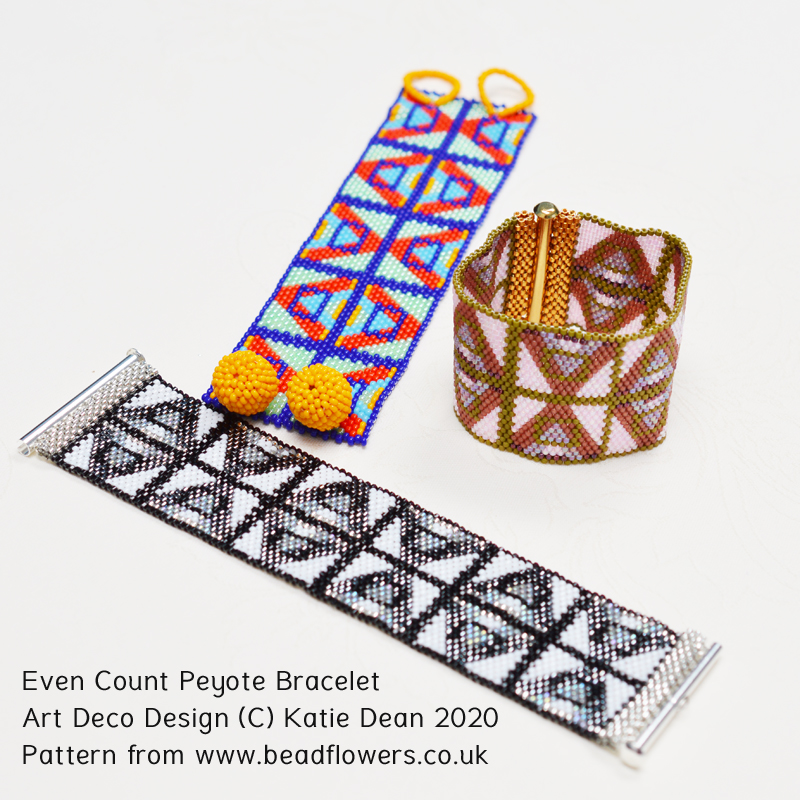
Click here to get this beading pattern
All three of these bracelets are the exact same design. The bright variation (with the toggle fastening) is made with rounded seed beads. The other two are made with Delicas. Can you see how the rounded seed beads are just a tiny bit irregular?
What you can’t tell from a photo is that the versions made with cylinder beads are ‘stiffer’. This again reflects the way in which the beads lock. So, for this reason, if you want to create dimensional beadwork (e.g. boxes), you should always work with cylinder beads. You will get a much more stable structure.
Sizes of cylinder beads
Just like the rounded seed beads, Cylinder beads are available in a variety of sizes.
The standard – and most common – size is 11/0. These are 1.6mm in size for Delicas, (according to the Miyuki website), but 1.8mm for AIKOs and Treasures.
Then, you have the smaller size 15/0 – 1.3mm for Delicas. TOHO don’t currently seem to have a 15/0 cylinder bead.
Both manufacturers also produce a larger size: 8/0 – 3mm for Delicas. This size is available in the Treasure beads too.
In addition to those three ‘standards’, Delicas come in a fourth size – ‘medium’ – size 10/0. These are 2.2mm in size.
To get a sense of the difference in size between the 11/0 and 10/0, take a look at the Peyote stars below:
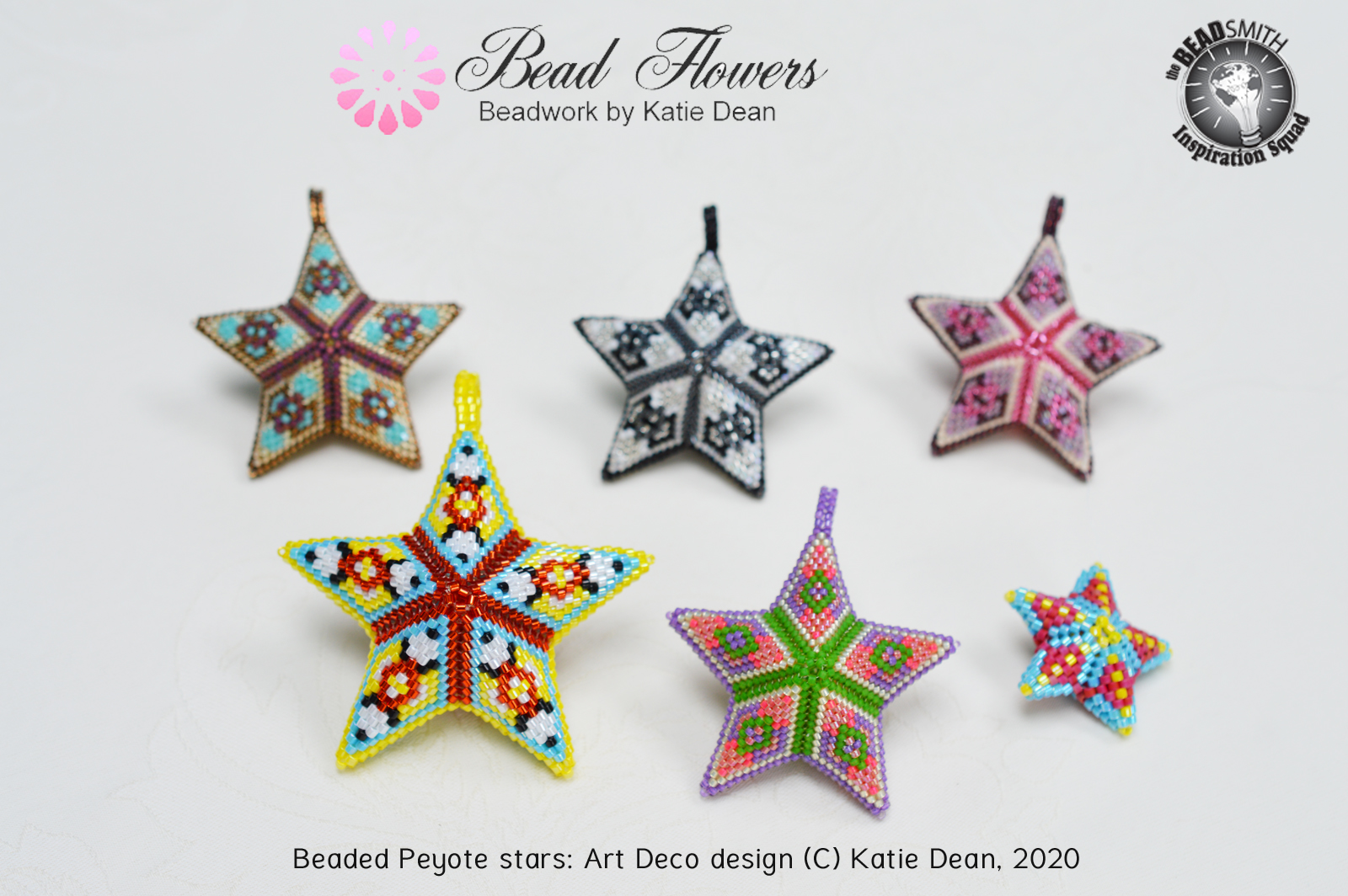
Click here to learn how to make Peyote stars…for free!
You can ignore the tiny star on the right – that is made with 10/0s, but is a smaller size. The brightly coloured orange and yellow star (bottom left) is also made with 10/0s and is the exact same pattern as the other stars, which I made using 11/0s. So, that gives you an indication of the difference in size.
Now, Miyuki also use a clever coding system to indicate their bead sizing, but I wrote about that in another article, which you can read here.
Colouring
All the cylinder beads are available in a huge range of colours. And both manufacturers are developing new colours all the time. So, the range is phenomenal, and in short, these beads are an absolute joy to use.
Summary: why should you use cylinder beads?
- They are precision made, so incredibly regular. This will create a much higher quality finish for your beading projects.
- Yes, they are more expensive than rounded seed beads, but you are paying for the quality, and it is worth it!
- They have larger holes, so you can easily pass your thread through multiple times without breaking the beads.
- You get an enormous range of colours, so you can create real works of art with these beads.
- They just feel lovely to use…there’s something pretty special about the ‘click’ as a cylinder bead slides into position!
- Just remember, you do have a choice of brand, but don’t be tempted to mix the brands as they are very slightly different in size.
More Bead Trivia…
While researching this blog post, I stumbled upon a few interesting articles. So, if you want to learn more about the manufacturing process, this article gives a particularly detailed explanation, which is fascinating to read.
If you have more questions about particular beads, or beading materials, you can use this link to ask me to write an article. You also want to make sure you’re on my mailing list so you don’t miss out on any of the articles appearing on this website. Click here to find out more.




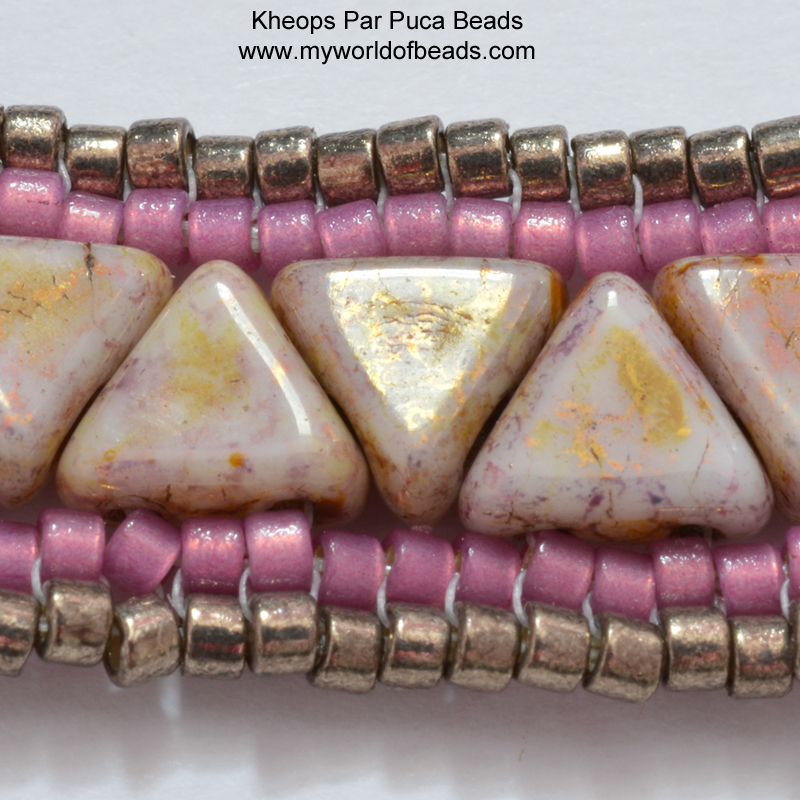






Thanks Katie for explaining Delica Beads. I’m enjoying your articles greatly.
I have a question. I have a small stash of dumb-bell-shaped glass beads. They have one hole through the middle. They’re 6mm long and 3-4mm wide. What is their commercial name and, better still, which company manufactures/manufactured them?
Thank you for your kind words, Joy. I’m glad this information is helpful.
It’s a bit difficult for me to tell from your description (it’s a great description, btw) – there are so many shapes and variations around today that these could be one of a few things. Possibly Pellet beads? This article is about the Pellets: https://www.myworldofbeads.com/what-are-pellet-beads/
If not, then if you’re able to send me a photo, I’ll see if I can identify from that.